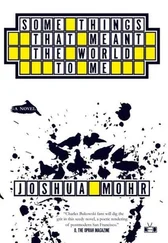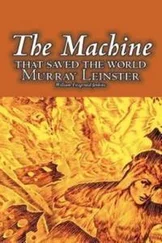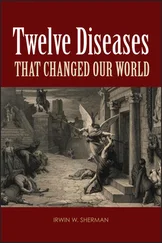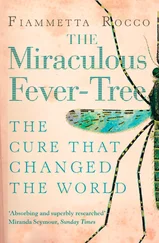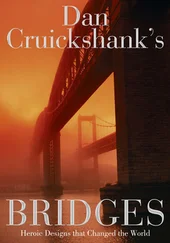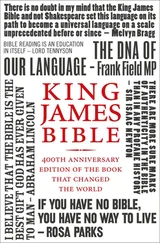Spice subsequently accompanied me to acid house clubs, to gigs and on capers, out on dates with inappropriate men. It accessorised Kookai hotpants, Lycra frocks from Pineapple, smiley T-shirts and red Kickers. I teamed it with fishnets, a velvet choker and beret and imagined myself in an Ellen von Unwerth shoot. I wore it with jeans and a wide headband and felt like Bardot, with a football shirt and Adidas Gazelles and thought I was Christy Turlington on the John Galliano catwalk. I was far from any of these things, but look back on Spice without a moment’s regret because, unlike so many products that completely sum up a fleeting moment in life, Spice is still a much loved, often used, part of my beauty kit. Only nowadays I wear Spice with a matching lipstick of brick red or terracotta brown, not a contrasting gloss the colour of Elastoplast.
The age of the selfie has reintroduced so many old-fashioned beauty techniques that I’d quite happily have left in the history books with lead face powder and chastity belts, and yet I feel nothing but joy at the huge resurgence in popularity of false eyelashes. Falsies were invented in 1916 (later than one might perhaps imagine), on the set of the film Intolerance, for leading actress Seena Owen’s big close-up. The director wanted the lashes on Owen’s sad eyes to skim her cheeks, and so the film’s hairdresser threaded wig hair onto some gauze and glued it to her lashline. Reusable false lashes went into production – initially using real hair or animal fur – and became a key element in almost all iconic Hollywood beauty looks. Nowadays, lashes are synthetic and mainly come on strips, but there’s still something so brilliantly decadent and utterly mad about sticking fake hair onto eyelids with glue, something so satisfying about fluttering huge lashes more at home on Tweetie Pie. No one can be bothered every day, of course, but the occasional application of falsies is a wonderful thing when you know how – and it really is so much easier than you may fear.
First, the lashes must be cut to size (unless they’re half lashes – those designed to be worn on the outer corners only and often just the thing for a more natural look). Cutting is important because if a strip lash is even the tiniest bit too wide for your lids, then the end will hit the bridge of your nose and peel off at some point during the course of the night, and a droopy falsie is never a good look. Cut from the outside; it’s tempting to preserve maximum flutter and cut from the inside, but this will rob the fan-shape of its gradual incline, and look unnatural. Second, always, always allow the glue (preferably Duo) to become a little dry and tacky. Wet glue is too messy and makes the lash too mobile and prone to wandering maddeningly onto fingers during application. Third, apply a little black liner and black mascara to disguise any joins. That’s it.
There are hundreds of wonderful lashes on the market. I love MAC 20, Red Cherry Joan, We Are Faux Carey Red and a host of designs by Eylure, but the affordable drugstore brand Ardell makes my favourites of all – and not only because of their deliciously naff 1970s branding. Ardell’s selection of designs is vast and caters for all eye sizes and tastes: from spiky and Twiggy-like to sleepy noir-era Bacall, to sumptuous feline flutters à la Loren. They either come without glue (my preference) or with Duo (the best). The invisible bands mean they can be worn more convincingly by chemotherapy patients than many other lashes, and, on a similarly practical level, they come out of the packaging without tearing or warping, go on like a dream and the tapered shapes and soft materials ensure that, generally speaking, they look more Old Hollywood, less Spearmint Rhino.
Among my earliest memories is one of lying on a towel as a young toddler, fresh from the bath, toasty from the nearby coal fire, giggling hysterically as my grandmother ‘iced me like a birthday cake’ with Johnson’s Baby Lotion, squeezed direct from the bottle like a piping bag. Forty years on, it remains one of my favourite smells of all time. It’s the smell of comfort, of security, of uncomplicated and predictable times. One deep whiff is like being cosseted in a warm blanket and tucked tightly and cosily into a single bed. It’s a fragrance I always think of as smelling exactly how it looks – pink, mellow, delicate, old-fashioned, soft and sweet. It’s frankly no good on my dry skin (it works as a cleanser for light make-up at a push, and is a nice body lotion for normal skins), but I love the smell so much that I’m never without a bottle in the house. If I feel inexplicably sad or stressed out, I flip open the cap and inhale.
Clarins Beauty Flash Balm
I feel about Beauty Flash the way I feel about olives: I should like them, they’re very much my kind of thing, other people love them and I doggedly keep trying to join in, but I just can’t pull it off. This is a balm that goes over moisturiser to plump and blur lines, pep up tiredness and general haggishness, but on me – and apparently me alone – it has always peeled off in clumps as soon as I attempt to apply make-up over the top. No matter, because what is indisputable is Beauty Flash’s iconic status. This is the product, I think, that first tabled the notion of primer – a skincare/make-up hybrid to smooth and perfect the complexion in readiness for foundation. There was nothing else like it when I first tried it some twenty-six years ago, and while things may have since moved on considerably to include primers for every conceivable skin type and gripe, blur balms and light reflectors for instant de-ageing, and so on, Beauty Flash’s countless fans remain utterly devoted to the original. I almost envy them.
Guerlain Météorites Pearls
If beauty had a grande dame, an impossibly glamorous French nana, who turned up at parties in a great dress and smoked Sobranie cigarettes through a Bakelite holder, she would be Guerlain’s Météorites. These are multicoloured pastel pearls of face powder designed to be swirled together with a brush then buffed into the skin to brighten and illuminate. Launched in 1987, Météorites may have looked outwardly like an antique shop find, but was remarkably ahead of its time. For years, it was one of very few consumer powders designed to give the complexion a radiant, rather than matte, finish (the radiance trend didn’t really hit the mainstream until Revlon launched Skinlights over a decade later), and the first to introduce the concept of powder balls (or ‘pearls’), allowing several different colours or shades to be used simultaneously to give a multi-dimensional look, before technology could provide it in traditional pressed formulations. Météorites was prohibitively expensive for many, but hugely influential on the mass market. Body Shop, Boots and Avon soon made bronzer, blusher and face powder in pearls, taking them from inaccessible luxury to full-on beauty craze. Météorites remained aloof and became a beauty icon with a devoted cult following.
Nowadays, illuminating powders are ten a penny and I won’t pretend that Météorites is my own weapon of choice, but I’m not sure I’d have so many to choose from were it not for Guerlain’s trailblazing. The pearls come in a stained-panel pot not a million miles from a Tiffany lamp, which when opened, releases the delicious powdery fug of crushed Parma Violet sweets. The whole thing is bulky, breakable and wholly impractical for any manner of travel, and should be moored to some art nouveau dressing table next to a string of beads and a Dirty Martini. But Guerlain has made some concessions to modernity: there are now different colourways for more skin tones, pressed versions, travel containers and various seasonal limited editions. Each is as unfeasibly pretty as the next.
Читать дальше
